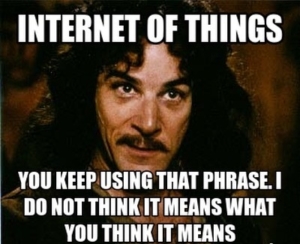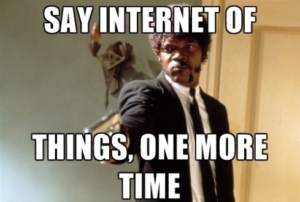IoT
Three letters that matter – IoT
IoT, we keep hearing these letters at every turn. We hear it alongside Big Data, Cloud Computing, Machine Learning, Blockchain and other fancy words that keep popping up in our domain. I wonder how many of us really understand what these three letters (IoT) mean to us. Is it part of the 4th industrial revolution you say? Well great then, it means we are part of a profound change and evolution that is happening. But who is “WE”? What is IoT exactly? What falls under it? Is there a difference between IoT and other three letter acronym M2M?

Let us take that last question and try to use it to explain IoT. Imagine a fuel tank connected to a Generator Set in the middle of nowhere that needs filling. If I just attached a level sensor to send me an SMS when the level drops to a set threshold, say 20%, I would classify that as an M2M solution. What if, I start adding other layers on top of that? I could add traffic data and optimal routes to improve my efficiency in my fuel delivery and filling schedules. Maybe take that a step further, and integrate the data and information coming to my platform into my workforce management system. I can even go all out and start to implement analytics and machine learning to predict when my next refilling and possibly information on how to be more efficient. If I do all that I would say that I have an IoT solution.
It might appear that I am discussing IoT and trying to define it, but that is not my intent. Instead, I want to explain what it means to us as solution providers. I have worked in Dubai for nearly 10 years in this industry and I have come to realize that we are sometimes missing the point in our offerings. I believe that a good chunk of solutions out there, specifically in the field of IoT, is not proper solutions that add value to the customer and instead are developed only to impress a manager or decision maker sitting in his/her ivory tower. These solutions rarely are worth it and could create some form of mistrust in the long run between end users and solution providers. Of course, I am not basing that on any statistical facts, but I have been to many meetings where a customer indicated that they invested thousands in technology solutions only to come to the conclusion that their old manual method of operations is more cost-effective.
The question that keeps presenting itself, what is a solution that is worth implementing and deploying? The three-other acronym that should go alongside IoT is ROI. As solution providers, we need to put ourselves in the customer’s shoes and understand their business. That does not mean that all of us in the field of technology should understand other industries such as logistics, agriculture, healthcare, etc.…However, we should be willing to spend time and effort to understand how their businesses can benefit from adding different technology layers. Whether the solution entails other fancy terms such as “Edge Analytics”, “Fog Computing”, “Bid Data Analysis”, “Cloud Computing”, …. It all comes down to what value could be derived.

I am a true proponent of the idea that IoT solutions are not products that you can sell from a shelf that are packaged in a perfectly shaped box. Instead, our approach should be that our product offering is guaranteed value and ROI through technology.
With this point of view and approach, I believe there is a gap that needs to filled in the next coming years for small IoT and M2M companies that are dedicated to providing specific solutions for specific business domains.
